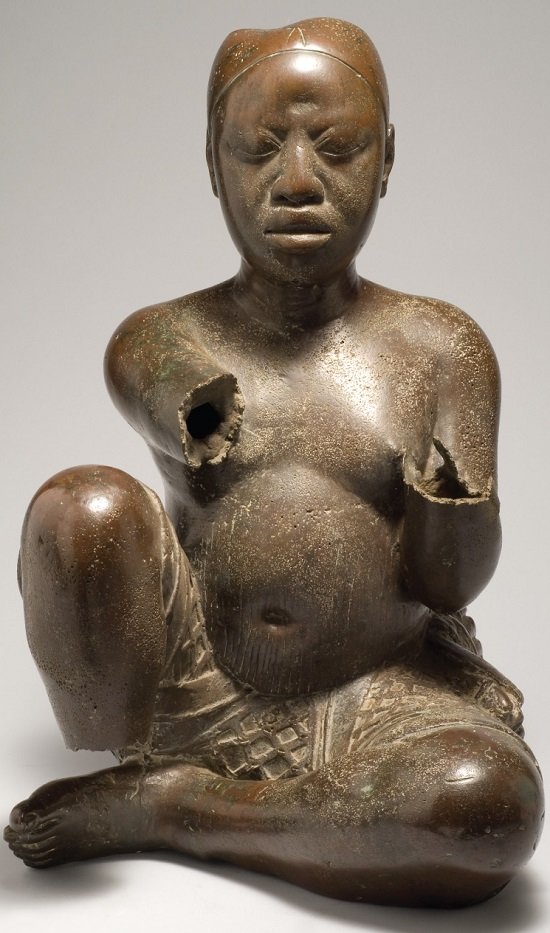Seated figure
- Object Name
- Seated figure
- Culture / Site
- Possibly from Ile-Ife, collected at Tada, Nigeria
- Medium
- Copper with traces of arsenic, lead, and tin
- Date
- Late 13th/14th century
- Dimensions
- Height 54 cm
- Credit Line
- National Commission for Museums and Monuments, Abuja, Nigeria, 79.R18. Photograph by Museum for African Art and The Fundación Marcelino Botín/ Karin L. Wilis
- Section
- The Long Reach of the Sahara/Ife and Its Orbit
- Description
The style and the extraordinarily thin casting of this naturalistic figure point to its likely creation at Ife, the royal capital of a powerful kingdom. In the early twentieth century, the figure was part of the ritual life of Tada, a small village on the banks of the Niger River 120 miles north of Ife. Every Friday it was taken to the Niger River to be ritually bathed with sand and water, accompanied by chants in Yoruba, a language associated with the city of Ife. During the medieval period, Tada’s location would have been of strategic importance to Ife, connecting it with long-distance trade. Analysis of the raw copper from which the statue is made suggests that it might have originated in France and traveled along these very trade routes to Ife, where it was cast.
